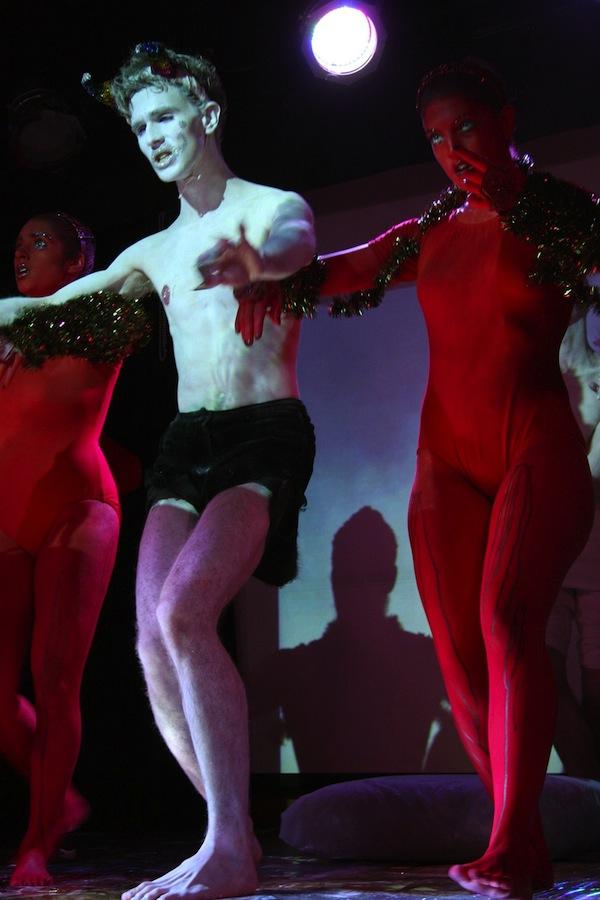Senior TIMARA Recital: In “My Little Daemon,” Singer Stages His Own Nightmare Before Christmas
Conservatory senior Calder Singer’s Senior TIMARA Recital, “My Little Daemon,” staged an epic internal battle against the backdrop of a hyper-commercialized Christmas wonderland.
April 22, 2011
“What would Christmas be like from a demon’s point of view?” This was the poignant question posed by Conservatory senior Calder Singer’s Senior TIMARA Recital. The answer: from a demon’s point of view, Christmas would be a torturous experience. Singer’s piece, titled My Little Daemon, set the stage for an exhausting battle between emotional extremes, which all manifested themselves in the internal conflict of the main character (played by Singer himself). Yet in the midst of the hyper-mixed media used in the piece and Singer’s trademark theatricality, the artist was able to wrap these extremes together as neatly as a bow atop a Christmas present.
Diverging from his ongoing project of preserving the memories of 9/11, Singer momentarily transformed the ’Sco into a winter playland. In this vision, Christmas served as a catalyst to explore larger issues of alienation: As everyone at one point or another feels excluded, weak or torn, Singer chose to set these universal emotions against the backdrop of the Christmas holiday. Regardless of one’s religious beliefs or practices, every winter we are bombarded by the media trying to sell us the holiday spirit, though music, film and an unfathomable amount of other commodities. Through his recital, Singer posed the question: Where is one left when one does not fit into the cookie-cutter standards established by commercial culture? This question set the ideal stage for a TIMARA performance. Using a combination of music with video, lighting, sculpture, costume, makeup and dance, Singer’s recital attacked us from every angle, as does the Christmas spirit itself.
We entered Singer’s cool, mystifying mentality with the opening image of College senior and featured performer Giordano Hardy-Gerena reaching out into the audience, the fluid motions of his arms hypnotizing us. As Hardy-Gerena invited Singer on from stage right, the performance began to launch into overdrive, with no hopes of turning back. Incorporating Butoh, a physical, mostly nude form of dance theater, Singer and his performers demonstrated great stamina throughout the 50-minute performance. All involved contorted their bodies in what looked to be painful gestures, their sadistic intakes of breath heard from the front rows.
The white body paint smeared onto 4 of the 7 performers was also effective, as it picked up the projected images and blurred the lines of the characters’ identities. In any moment, Singer could have been the embodiment of a given media influence, whether it be a commercial on TV, a dream-like state of heaven or even just the plain white body itself, an image that evoked the undead.
Amidst all the fantastic stimuli, however, there were moments that detracted from the symbolism of Singer’s work, momentarily weakening it. The intention of the pill bottles, for instance, was ostensibly to embellish the internal conflict of the main character, and to make his struggles more visible. The prop, however, was distracting, instead suggesting the persona of a depressed teenager.
Yet despite not completely exploring some of the symbolic implications of his own work, all the while Singer kept true to his aesthetic, never veering from the artist’s aim of consistently venturing into new thematic territory. The performance served as an outlet for the artist’s frustrations, his struggles made accessible through the lens of a metaphoric fictional character. Not only could we see ourselves in his pain, but we also were able to see underneath the many layers of Singer’s gift-wrapped psyche.



















